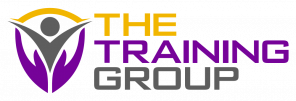Designing Inclusive Resources with New and Emerging Technologies
Introduction:
Inclusive education focuses on meeting the diverse needs of all learners by designing and implementing resources and learning environments that are accessible, engaging, and effective. New and emerging technologies play a significant role in achieving this goal, as they offer numerous opportunities to create innovative, adaptable, and personalized learning experiences. This article will discuss the importance of incorporating new technologies in education, how they can enhance learning experiences, and how to design resources that engage and meet individual learner needs using these technologies.
Exploring Innovative Technologies in Education:
-
Virtual Reality (VR) and Augmented Reality (AR): These technologies allow learners to immerse themselves in virtual environments, interact with 3D objects, and engage in experiential learning. Examples include VR field trips, AR-enhanced textbooks, and interactive simulations.
-
Artificial Intelligence (AI) and Machine Learning: These technologies can personalize learning experiences by analyzing learner data and providing tailored feedback, adaptive content, and customized learning paths.
-
Gamification: Incorporating game elements, such as points, badges, and leaderboards, into educational resources can increase learner motivation, engagement, and retention.
-
Learning Management Systems (LMS): LMS platforms facilitate online learning by organizing and delivering course content, managing learner progress, and enabling communication between learners and instructors.
Table 1: Examples of New and Emerging Technologies in Education
| Technology | Application |
|---|---|
| Virtual Reality (VR) | Immersive field trips, interactive simulations |
| Augmented Reality (AR) | Enhanced textbooks, 3D object interaction |
| Artificial Intelligence (AI) | Personalized feedback, adaptive content |
| Gamification | Motivation, engagement, and retention |
| Learning Management Systems | Course organization, progress tracking, communication |
Integrating Technology to Enhance Learning Experiences:
- Accessibility:
Put simply, accessibility in education is about making information readily available and easy to digest for all types of students. Accessible education empowers students with disabilities to develop the same skills and achieve the same level of knowledge as their peers.
In the past, students with learning disabilities or physical impairments were typically sent to a special classroom, separated from their fellow students. By increasing accessibility in education, we are allowing those students to learn in the same classrooms as their peers, with all the educational, emotional, and social benefits that inclusion allows. The modern sentiment is that this method of inclusive education is far more beneficial than separation, for both the management of learning disabilities and the education of students facing those challenges.
The demands of accessible education are constantly shifting. As methods of teaching change and technology evolves, tactics for boosting accessibility must evolve, too.
Technologies such as text-to-speech software closed captions, and screen readers can make learning materials more accessible for learners with disabilities. For example, ReadSpeaker provides text-to-speech solutions for online content, while Amara offers a platform for creating and sharing video captions.
Resources:
- ReadSpeaker: https://www.readspeaker.com/
- Amara: https://amara.org/
- Engagement: Interactive multimedia, gamification, and immersive experiences can increase learner engagement by providing opportunities for active learning, collaboration, and problem-solving. Tools like Kahoot! enable the creation of interactive quizzes and games, while platforms like Classcraft use game elements to promote positive classroom behavior and collaboration.
Resources:
- Kahoot!: https://kahoot.com/
- Classcraft: https://www.classcraft.com/
- Personalization: AI-driven algorithms can analyze learner data and provide personalized feedback, content, and learning paths tailored to individual needs and preferences. Tools like Knewton use AI to create adaptive learning experiences, while platforms like Smart Sparrow offer personalized learning design and analytics.
Resources:
- Knewton: https://www.knewton.com/
- Smart Sparrow: https://www.smartsparrow.com/
- Flexibility: Online platforms and digital resources enable learners to access course materials anytime, anywhere, and at their own pace. Tools like Google Classroom facilitate the organization and delivery of course materials, while platforms like Coursera offer a wide range of online courses from top universities and institutions.
Resources:
- Google Classroom: https://classroom.google.com/
- Coursera: https://www.coursera.org/
Table 2: Examples of Tools and Platforms for Enhancing Learning Experiences
| Category | Tool/Platform | Description |
|---|---|---|
| Accessibility | ReadSpeaker | Text-to-speech solutions for online content |
| Accessibility | Amara | Platform for creating and sharing video captions |
| Engagement | Kahoot! | Interactive quiz and game creation tool |
| Engagement | Classcraft | Gamification platform for promoting collaboration |
| Personalization | Knewton | AI-driven adaptive learning experiences |
| Personalization | Smart Sparrow | Personalized learning design and analytics platform |
| Flexibility | Google Classroom | Online platform for organizing and delivering course materials |
| Flexibility | Coursera | Online courses from top universities and institutions |
By integrating these technologies into educational resources, educators can enhance learning experiences by addressing the diverse needs and preferences of learners, promoting engagement, and providing flexibility in accessing course materials.



